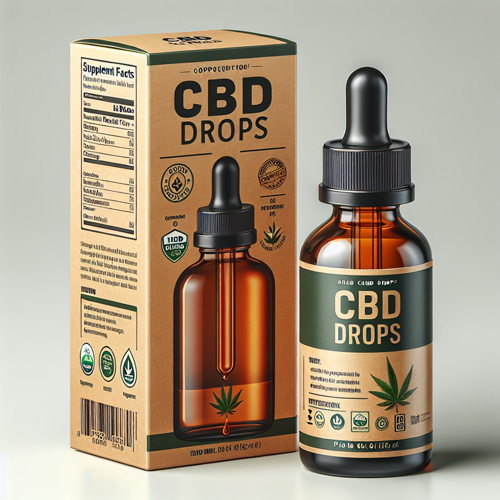
Sustainability of Hemp Paper
Hemp paper is a sustainable and eco-friendly alternative to traditional tree-based paper. It is made using the fibers derived from the hemp plant, specifically the stalks and hurds.
Its production involves a process that includes separating the fibers, pulping them, and then forming them into sheets. The cellulose content and tensile strength of hemp fibers make them an excellent raw material for paper production.
It not only reduces reliance on the paper industry’s extensive use of acres of trees but also has a lower carbon footprint compared to traditional paper. Additionally, hemp paper products offer a wide range of applications, including packaging, printing materials, and archival paper, making it a versatile and sustainable resource.
Its production requires fewer chemicals and natural resources and has an overall lower environmental impact. It is an essential component in promoting a more sustainable future, supporting the conservation of trees and minimizing the carbon dioxide emissions associated with paper production.
Overview of Hemp Paper Sustainability
Hemp paper offers a sustainable alternative to traditional tree-based paper due to its various environmentally friendly qualities. One of the key advantages of hemp paper is its high recyclability. Unlike tree paper, it can be recycled multiple times without significantly degrading its quality. This not only reduces waste but also conserves natural resources.
Another aspect of its sustainability is its faster growth rate compared to trees. Hemp plants can reach maturity in as little as 90-120 days, whereas trees can take years or even decades to grow. This shorter growth cycle of hemp paper vs tree paper allows for more frequent harvests and reduces the pressure on forests, thus minimizing deforestation.
Furthermore, hemp paper production has reduced negative environmental impacts compared to traditional paper manufacturing processes. Hemp plants require fewer pesticides and fertilizers, which helps to mitigate pollution. Additionally, industrial hemp has a higher concentration of cellulose compared to trees, making it more efficient in paper production.
Transitioning to hemp paper offers significant benefits in terms of reducing deforestation and pollution. By utilizing hemp fibers, we can decrease the demand for acres of trees used by the paper industry. This, in turn, helps to conserve forests, which are essential ecosystems for biodiversity and carbon sequestration. Moreover, that production generates a lower carbon footprint compared to traditional paper production methods.
In summary, the sustainability of hemp paper lies in its high recyclability, faster growth rate, and reduced negative environmental impacts. Transitioning to hemp can contribute to the conservation of forests, reduction of pollution, and overall environmental preservation.
Benefits of Hemp Paper
Hemp paper offers numerous benefits that make it a sustainable and environmentally friendly alternative to traditional tree-based paper.
Firstly, hemp plants grow much faster than trees, reaching maturity in 90-120 days compared to the years or decades it takes for trees to grow. This shorter growth cycle allows for more frequent harvests, reducing the pressure on tree forests.
Secondly, hemp paper production has a lower environmental impact compared to traditional paper manufacturing processes. Hemp plants require fewer pesticides and fertilizers, reducing pollution and minimizing the use of harmful chemicals.
Additionally, hemp has a higher concentration of cellulose, making it more efficient in paper production. By transitioning to hemp paper, we can decrease the demand for acres of trees used by the paper industry, helping to conserve forests and protect essential ecosystems.
Furthermore, hemp paper production generates a lower carbon footprint, mitigating the greenhouse gas emissions associated with traditional paper production methods. Overall, it offers a sustainable and viable solution for reducing deforestation, pollution, and carbon emissions in the paper industry.
Reduced Carbon Footprint
Hemp paper offers a sustainable alternative to traditional tree-based paper, significantly reducing the carbon footprint associated with paper production. This eco-friendly material stands out for its ability to sequester carbon dioxide from the atmosphere, making it a valuable tool in mitigating greenhouse gas emissions.
One of the key advantages of hemp is its fast growth rate. Hemp plants reach maturity within just four months, compared to the many years it takes for trees to grow. This rapid growth allows for more frequent harvests, reducing the need for deforestation and preserving vital forest ecosystems.
Furthermore, hemp requires minimal water and fertilizers to thrive, making it a more sustainable resource compared to tree-based paper production. Its deep roots help retain water in the soil, reducing the strain on precious water resources.
Additionally, hemp has a higher concentration of cellulose in its fibers than trees, making it an ideal raw material for paper production. This means that lower hemp fiber content is needed to produce the same amount of paper as tree fibers, further reducing environmental impact.
By choosing this paper over traditional tree-based paper, individuals and businesses can make a positive impact on the environment by reducing deforestation and lowering carbon emissions. Hemp paper is not only a sustainable alternative, but it also offers the same level of quality and versatility as conventional paper products.
Overall, the use of hemp paper is an important step towards a more sustainable paper industry, helping to maximize the carbon positive materials and conserve natural resources.
Durable and Versatile Material
It is not only a sustainable choice, but it also stands out as a durable, versatile and adaptable material. With its high tensile strength, the characteristics of hemp can be more resistant to tearing and damage compared to traditional tree-based paper. This makes it ideal for a wide range of applications, from stationery and packaging to printing materials and even industrial sectors.
One of the key advantages of this paper is its recyclability. While tree paper can typically be recycled up to three times before the fibers break down, hemp paper can be recycled up to seven times without losing its structural integrity. This extended recyclability not only reduces waste but also conserves valuable resources.
In terms of environmental impact, using paper from industrial hemp significantly reduces greenhouse gas emissions and pollution. Hemp plants absorb more carbon dioxide from the atmosphere compared to trees, helping to sequester carbon. Additionally, the production of hemp paper requires less energy and chemicals compared to traditional paper production, resulting in lower pollution levels.
The durability and versatility of hemp paper make it an excellent choice for packaging solutions. Its strength and resistance to tearing ensure that products are protected during transport and storage. Moreover, hemp paper can be molded and shaped into various packaging forms, providing a sustainable and eye-catching alternative to traditional packaging materials.
Overall, hemp paper’s durability and versatility, along with its positive environmental impact, make it an exceptional choice for individuals and businesses looking for sustainable paper solutions.
Lower Environmental Impact Than Tree-Based Paper
Hemp paper offers a significantly lower environmental impact compared to tree-based paper. One of the main reasons is that hemp plants have a much faster growth cycle, allowing for more efficient paper production. Unlike trees that take years to reach maturity, hemp plants can be harvested in just a few months.
This faster growth cycle means that hemp paper production can help reduce the need for deforestation. By using hemp fibers as a raw material instead of cutting down acres of trees, we can preserve ecosystems and protect wildlife habitats. This sustainable approach not only reduces the loss of biodiversity but also helps to maintain the delicate balance of our planet’s ecosystems.
Furthermore, hemp paper production minimizes pollution. Traditional paper mills often require the use of harsh chemicals and intensive energy consumption. In contrast, the production of hemp paper requires less energy and chemicals, leading to lower levels of pollution. The use of natural resources, such as water, is also more efficient in the production process of hemp paper.
In addition to its lower environmental impact, hemp based paper has the advantage of being highly recyclable. Not only can it be recycled up to seven times without losing its structural integrity, but it also does not release toxic substances during its creation process. This makes hemp paper a sustainable alternative that helps to reduce waste and protect our environment for future generations.
Hemp based paper production offers a lower environmental impact compared to tree-based paper. It helps reduce deforestation, preserve ecosystems, decrease pollution, and has a higher recycling capability. By choosing hemp paper, we can make a positive impact on our planet and contribute to a more sustainable future.
Replacement for Recycled Paper
Hemp paper serves as an excellent replacement for recycled paper due to its numerous advantages. Not only is hemp paper more environmentally friendly, but it also offers superior qualities that make it a sustainable alternative to traditional recycled paper.
One of the key advantages of hemp sourced paper is its recyclability. While recycled paper can only be recycled a few times before degrading, hemp paper can be recycled up to seven times without losing its structural integrity. This not only reduces waste but also helps to conserve resources, making hemp paper a more sustainable choice.
Another significant advantage is hemp paper’s lower impact on deforestation. Hemp fibers, derived from the stalks of the hemp plant, can be used as a raw material for paper production. Unlike the acres of trees that are often cut down for traditional paper, hemp paper can help preserve ecosystems and protect wildlife habitats. This sustainable approach contributes to the reduction of deforestation, promoting the sustainability of our planet’s ecosystems.
Additionally, hemp paper production minimizes pollution. Unlike traditional paper mills that require the use of harsh chemicals and intensive energy consumption, hemp paper production requires fewer chemicals and energy, leading to lower levels of pollution. This eco-friendly manufacturing process helps to mitigate the environmental impact of the paper industry.
All these benefits make hemp paper an ideal replacement for recycled paper. Its recyclability, lower impact on deforestation, and reduced pollution during production make it an environmentally friendly choice. By choosing hemp paper, we can contribute to the preservation of natural resources and create a more sustainable future.
Raw Materials Used in Hemp Paper Production
Hemp sourced paper production utilizes raw materials derived from the hemp plant, namely hemp fibers and hemp pulp. The fibers are extracted from the stalks of the hemp plant, while the pulp is derived from the inner bark of the plant, known as the hurd or shives.
These raw materials serve as the basis for the production of high-quality hemp paper. Unlike traditional paper production which relies heavily on the use of trees, hemp offers a more sustainable alternative. By utilizing hemp plants, we can reduce deforestation and preserve ecosystems.
Furthermore, hemp based paper production requires fewer chemicals and energy compared to traditional paper mills, resulting in lower levels of pollution. This eco-friendly approach not only provides a sustainable solution for the paper industry but also helps to mitigate the environmental impact of paper production.
Hemp Plants and Stalks
Hemp plants and stalks possess unique characteristics that make them an excellent raw material for hemp paper production. Firstly, hemp plants have a fast growth rate, allowing for multiple harvests in a single year. This rapid growth makes hemp a sustainable resource as it requires less land and time compared to traditional tree-based paper production.
Hemp stalks, in particular, are prized for their fibrous composition. They contain a high cellulose content, an essential component for paper manufacturing. Additionally, hemp stalks have lower lignin levels compared to trees. Lignin is a complex organic polymer that gives trees their rigidity but requires significant chemical processing to extract cellulose for paper production. The lower lignin content in hemp stalks reduces the need for harsh chemicals, making hemp paper production more environmentally friendly.
Moreover, the versatility of hemp plants goes beyond just paper production. Different parts of the plant, such as the seeds and the fibers, can be utilized for various industries. Hemp seeds are used for their oil, while the long and strong fibers from the stalks are suitable for textiles, construction materials, and even bioplastics.
Overall, the characteristics and properties of hemp plants and stalks make them a sustainable and viable alternative to traditional raw materials for paper production. Their fast growth rate, high cellulose content, and lower lignin levels contribute to reducing the environmental impact of the paper industry.
Additionally, the ability to use different parts of the hemp plant for various applications further highlights its versatility and potential as a valuable resource.
Hemp Hurds, Pulp and Fibers
Hemp paper production involves the use of three key components: hemp hurds, pulp, and fibers, all of which contribute to the sustainability of hemp paper.
Hemp hurds are the inner woody core of the hemp stalks. They are rich in cellulose and have a high absorbency rate, making them ideal for paper production. Unlike traditional tree-based paper, which requires a chemical-intensive process to extract cellulose, hemp hurds can be easily converted into pulp without the need for harsh chemicals. This significantly reduces the environmental impact of hemp paper production.
Hemp pulp is the resulting material after the hemp hurds are processed. It is made by breaking down the fibers into a slurry through mechanical or chemical means. Hemp pulp has a high cellulose concentration, which gives the paper its strength and durability. Additionally, hemp pulp has a low lignin content, which means fewer chemicals are needed during the pulping process.
Hemp fibers, derived from the outer bark of the hemp stalks, are long and strong. These fibers provide tensile strength to the paper, making it durable and versatile. Moreover, the chemical composition of hemp fibers, specifically their high cellulose content, increases the quality of the paper by improving its resistance to tearing and deterioration over time.
The use of all three components – hemp hurds, pulp, and fibers – in hemp paper production showcases the sustainability of this alternative to traditional tree-based paper. The ease of converting hemp hurds into pulp, the reduced need for harsh chemicals, and the durability of hemp fibers all contribute to a more eco-friendly and sustainable paper industry.
Chemical Composition of Hemp Fibers
Hemp fibers, derived from the outer bark of the hemp stalks, have a unique chemical composition that makes them ideal for paper production. The primary component of hemp fibers is cellulose, which accounts for approximately 85% of their composition. Cellulose is a complex carbohydrate that provides the structural integrity and strength necessary for making paper.
In addition to cellulose, hemp fibers also contain other chemical components such as lignin and hemicelluloses. Lignin, a complex polymer, acts as a glue-like substance that holds the cellulose fibers together, giving them increased rigidity and resistance to breaking. Hemicelluloses, on the other hand, are polysaccharides that provide flexibility and elasticity to the fibers, allowing them to be easily molded and shaped during the papermaking process.
Understanding the chemical composition of hemp fibers is crucial in determining their properties and applications. The high cellulose content of hemp fibers gives them excellent tensile strength and durability, making them suitable for a wide range of paper products.
Additionally, the presence of lignin and hemicelluloses contributes to the overall quality of the paper by enhancing its resistance to wear and tear.
Other natural compounds inhibit mold growth, lengthening the degradation time, further making the case for bio-based materials like hemp products.
Overall, the chemical composition of hemp fibers, characterized by their high cellulose content, lignin, and hemicelluloses, makes them a sustainable and versatile raw material for the production of high-quality paper.
Utilizing industrial hemp fibers as an alternative to traditional tree-based paper not only reduces the demand for valuable natural resources but also helps to mitigate the environmental impact associated with the paper industry.
Applications of Hemp Paper
Hemp paper has a wide range of applications across various industries. The durability and strength of hemp fibers make them ideal for producing a variety of paper products.
Hemp sourced paper can be used for printing books, newspapers, and magazines, as well as for packaging materials such as cardboard boxes and paper bags. Its high tensile strength also makes it suitable for manufacturing fine art paper and archival paper, ensuring the longevity and preservation of important documents and artwork.
Additionally, hemp paper is commonly used in the production of specialty papers such as currency and cigarette paper. Its antibacterial properties and high water absorption capacity make it a valuable material for applications in the medical and hygiene sectors, such as bandages and sanitary products.
Overall, the versatile nature of hemp makes it a sustainable alternative to tree-based paper in various industries, contributing to a more eco-friendly future.
Writing and Printing Papers
Hemp paper has gained popularity in the writing and printing industry due to its versatility and eco-friendly properties. It can be used in various applications such as writing and printing papers, making it an excellent choice for those seeking sustainable alternatives.
Hemp paper is commonly used to create eco-friendly stationery products, including journals, notebooks, business cards, planners, and gift cards. These products are not only aesthetically pleasing but also contribute to a more sustainable future. Hemp paper is known for its durability, making it suitable for long-lasting stationery items that can withstand frequent use.
In addition to its durability, hemp paper is highly sustainable. Hemp plants are an excellent renewable resource, with fibers derived from hemp stalks used as raw material. Hemp paper production requires fewer chemicals and energy compared to traditional tree-based paper. The cultivation of industrial hemp crops also has a reduced environmental impact, as hemp plants absorb more carbon dioxide than trees during their growth stage.
Furthermore, hemp paper material is recyclable and can be recycled several times without losing its quality. This reduces the demand for virgin materials and ultimately helps in conserving natural resources. Choosing hemp paper over traditional tree-based paper can significantly reduce the carbon footprint associated with paper production.
Hemp paper material offers a sustainable and durable alternative to traditional tree-based paper. Its applications in writing and printing papers are vast, and it is widely used to create eco-friendly stationery products. By opting for hemp paper, individuals and businesses can play their part in reducing environmental impact and promoting sustainability.
Packaging Solutions with Hemp Paper: A Sustainable Alternative to Tree-Based Paper
With the increasing demand for sustainable packaging solutions, hemp paper has emerged as an eco-friendly alternative to traditional tree-based paper. From boxes and bags to labels and inserts, a wide range of packaging solutions can be created using hemp paper, making it an ideal choice for environmentally conscious businesses.
One of the key advantages of using hemp paper for packaging is its recyclability. Hemp sourced paper can be recycled multiple times without compromising its quality, reducing the need for virgin materials and minimizing waste. This recyclability not only helps conserve natural resources but also reduces greenhouse gas emissions and energy use associated with paper production.
In addition to its sustainability benefits, hemp paper possesses superior characteristics that make it well-suited for packaging applications. Its durability ensures that products remain protected during transportation and handling, while its high tensile strength allows for the creation of sturdy and reliable packaging solutions. Moreover, hemp paper can be easily manipulated to form different shapes and sizes, offering versatility in design options for packaging needs.
By opting for hemp paper as a packaging solution, businesses can make considerable strides towards reducing their environmental footprint. With its recyclability, reduced greenhouse gas emissions, lower energy consumption, and lesser pollution, hemp is an ideal choice for sustainable packaging that supports a greener future.
Industrial Use of Hemp Paper Products
Hemp paper is not limited to traditional writing and printing papers; it has a wide range of industrial uses across various sectors. Its versatility as a material makes it suitable for numerous applications beyond the realm of stationary.
In the packaging industry, components from hemp fiber are a sustainable alternative that offers durability, strength, and flexibility. It can be utilized for boxes, bags, labels, inserts, and other packaging solutions. Its high tensile strength ensures that products remain secure during transport and handling, while its ability to be easily manipulated allows for versatile design options.
In the textile industry, industrial hemp sourced paper can be used as a component in creating hemp fabrics. Its antibacterial properties make it an excellent choice for clothing, beddings, and other textile products. Hemp paper can also be used to create eco-friendly materials for construction and industrial sectors, such as insulation, wall panels, and composite materials.
Moreover, hemp based paper products have potential applications in automotive and aerospace industries. They can be used in interior components, seat covers, and other parts where sustainability and durability are essential.
In summary, hemp paper is a versatile material that can be utilized in various industrial sectors. Applications of hemp extend beyond traditional writing and printing papers, including packaging solutions, textile industry, construction, automotive, and aerospace sectors. By incorporating hemp products into different industries, businesses can contribute to a more sustainable future.

































